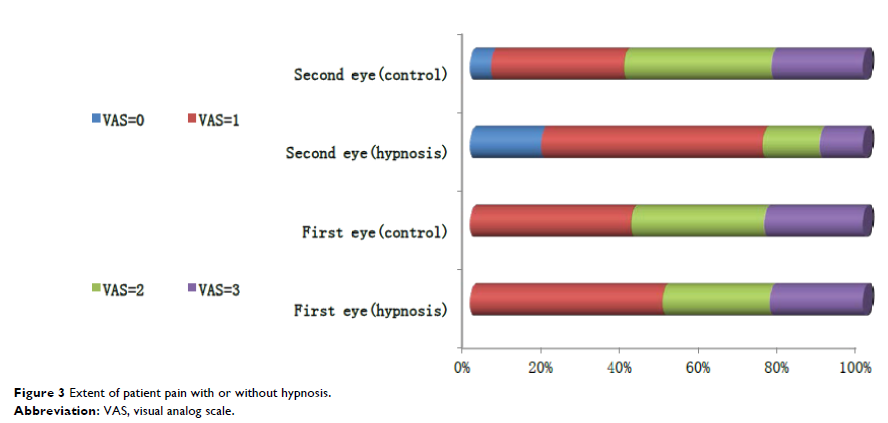9 0 8 1 0
论文已发表
注册即可获取德孚的最新动态
IF 收录期刊
- 2.6 Breast Cancer (Dove Med Press)
- 3.9 Clin Epidemiol
- 3.3 Cancer Manag Res
- 3.9 Infect Drug Resist
- 3.6 Clin Interv Aging
- 4.8 Drug Des Dev Ther
- 2.8 Int J Chronic Obstr
- 8.0 Int J Nanomed
- 2.3 Int J Women's Health
- 3.2 Neuropsych Dis Treat
- 4.0 OncoTargets Ther
- 2.2 Patient Prefer Adher
- 2.8 Ther Clin Risk Manag
- 2.7 J Pain Res
- 3.3 Diabet Metab Synd Ob
- 4.3 Psychol Res Behav Ma
- 3.4 Nat Sci Sleep
- 1.9 Pharmgenomics Pers Med
- 3.5 Risk Manag Healthc Policy
- 4.5 J Inflamm Res
- 2.3 Int J Gen Med
- 4.1 J Hepatocell Carcinoma
- 3.2 J Asthma Allergy
- 2.3 Clin Cosmet Investig Dermatol
- 3.3 J Multidiscip Healthc

用于白内障手术期间疼痛感知管理的催眠干预
Authors Chen X, Yuan R, Chen X, Sun M, Lin S, Ye J, Chen C
Received 25 May 2018
Accepted for publication 13 July 2018
Published 20 September 2018 Volume 2018:11 Pages 1921—1926
DOI https://doi.org/10.2147/JPR.S174490
Checked for plagiarism Yes
Review by Single-blind
Peer reviewers approved by Dr Colin Mak
Peer reviewer comments 3
Editor who approved publication: Dr Michael Ueberall
Objective: To investigate the effectiveness of hypnosis in pain management
during cataract surgery.
Methods: Male or female patients with bilateral age-related cataract who
wished to have both eyes subjected to phacoemulsification surgery were
preliminarily admitted. Immediately after the first-eye surgery, each patient
was evaluated for pain using the visual analog scale (VAS), and patients with a
VAS score >1 were enrolled. By using block randomization, the enrolled
patients were allocated to either the treatment group, which received a
hypnosis intervention before the scheduled second-eye surgery, or the control
group, which did not undergo hypnosis. The levels of anxiety, pain, and cooperation
were evaluated independently by the patients and the surgeon.
Results: During the intraoperative pain assessment, 5%, 34%, 38%, and 23%
of patients in the control group reported experiencing no pain, mild pain,
moderate pain, and severe pain, respectively. In contrast, in the hypnosis
group, 18%, 56%, 15%, and 11% of patients reported experiencing no pain, mild
pain, moderate pain, and severe pain, respectively, which showed significant
differences between the groups (P <0.005). The
evaluation of anxiety level showed that the mean score in the control group and
hypnosis group was 11.77±0.32 and 6.64±0.21, respectively, revealing a highly
significant difference between the two groups (P <0.005).
The assessment of patient cooperation showed that only 5% and 18% of patients
in the control group and 18% and 36% of patients in the hypnosis group showed
excellent and good cooperation, respectively, while 47% of patients in the
control group and only 24% of patients in the hypnosis group exhibited poor
cooperation, revealing significant differences between the groups (P <0.005).
Conclusion: Hypnosis may be considered as an auxiliary measure in cataract
surgery, especially for patients who experienced obvious pain during the
first-eye surgery.
Keywords: pain, patient satisfaction, cataract surgery, hypnosis
